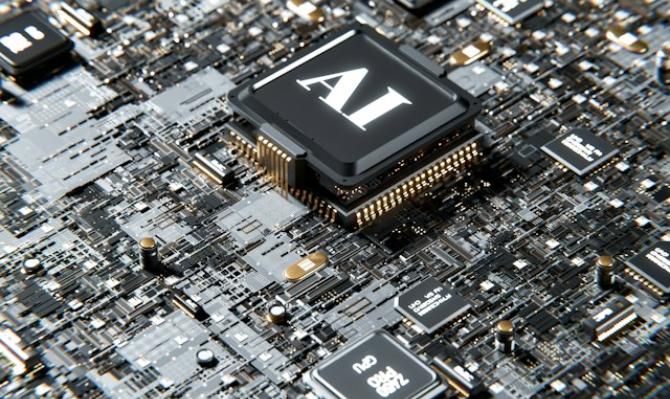New technologies: what are they and how do they affect the economy?
To date, technological change has been key to the economic and social development of the human race. Despite this, the technological revolution that we are currently experiencing, with artificial intelligence (AI) at the helm, is a source of not only wonder but also some misgivings. These misgivings may be due to the new nature of the technologies of the future and the disruptive effects they could have on our economy and society. At the same time, these new technologies could be key to the revival of economic growth that is faltering so much in our European environment.
In this first article of the Dossier, we will go over the different channels through which technology can affect the economic environment.
What is artificial intelligence?
Before discussing the channels through which new technologies affect the economy, it is worthwhile clarifying what we mean by AI, one of the pillars of the technology of the future.
AI has come leaps and bounds since its conception in the 1950s at the University of Dartmouth. The 1990s marked the beginning of a very important stage in the development of AI. However, the real explosion in research into the different techniques used in AI took place in the early 2000s, and a decade later we began to see significant growth in the number of associated patents (see first chart). As an example, 53% of all AI-related patents are subsequent to 2012.1 Some of the most memorable milestones in the development of AI since the 1990s include the moment when, in 1997, the then chess champion Gary Kasparov was defeated by IBM’s supercomputer Deep Blue; when, in 2011, Apple introduced us to its now ubiquitous virtual assistant Siri, and when, in 2012, Google surprised us with the first driverless car.
According to Brookings, «AI consists of machines that respond to stimulation in the same way as humans would, given the human capacity for contemplation, judgement and intention».2 In other words, AI is a software system that reflects human intelligence. More specifically, Brookings talks about its three essential qualities: intentionality, intelligence and the capacity to adapt. Intentionality refers to the faculty of new machines to make decisions in real time using their ability to «feel». This is possible, for instance, thanks to the use of sensors. With regard to intelligence, machine learning (one of the main techniques used in AI), together with data analysis, allows machines to make decisions that we can define as «intelligent». Finally, the capacity to adapt is the ability of new machines to learn as they acquire more information, and to adapt their responses based on what they have learned (they can even learn from the successes and mistakes of other machines, since they are usually interconnected and share experiences between one another).
Effects on the economy
It is well known that technological progress is key to stimulating productivity growth and, therefore, economic growth.3 Even so, technological progress can be a disruptive force in the economy: almost 100 years ago, Keynes coined the term «technological unemployment» to refer to the unemployment caused by workers being replaced by machines. Nevertheless, technological advances also expand our productive capacities, which means that they lead to the creation of new jobs.
In this regard, in a world in which machines not only execute tasks and think, but are also beginning to learn, the possibilities for the automation of jobs can reach unimaginable heights.4
In today’s technological age, experts have focused on four channels through which new technologies can affect the economic environment (see summary table):
1. Technological unemployment. Without a doubt, this is one of the channels that has been most explored in the past and which is also gaining strength today. In general, those who fear the most that machines could replace us as workers do so based on the well-known «substitution effect». In fact, automation has been, is and will be a clear substitute for numerous jobs, which means a destruction of employment in certain sectors and occupations.
The Oxford professors Carl B. Frey and Michael A. Osborne are the authors of one of the works on job destruction that has aroused the most interest, since it suggested that 47% of all jobs in the US were at a high risk of being automated.5 Following their line of thought, at CaixaBank Research we estimated some time ago that, in the case of Spain, this percentage stood at 43%.6
However, three economists from the OECD (Arntz, Gregory and Zhieran) were quick to replicate the study by Frey and Osborne, coming up with a substantially lower percentage taking into consideration that jobs comprise multiple tasks and that only some of them are susceptible to being automated. Under this alternative approach, and with data for 21 OECD countries, the percentage of jobs at risk of being replaced by automation would fall to 9%.7
2. Productivity. Contrasting with the substitution effect is what is known as the complementarity effect. There are jobs in which automation complements the worker. In these cases, machines actually increase workers’ productivity.
In an article that covers numerous classical studies relating technology with productivity, Kevin J. Stiroh, vice president of the Federal Reserve Bank of New York, concluded that information and communication technologies (ICTs) were a significant driver behind the improvements in the US’ productivity at the end of the 1990s.8
More recently, various analyses forecast a significant increase in labour productivity thanks to AI in the medium term. Accenture, for instance, talks about global economic growth rates that could double the current ones by the middle of the next decade, thanks in part to significant increases in labour productivity (of up to 40%) as a result of the use of AI: the new forms of technology complement the labour force, thus increasing its efficiency.9
The link between AI and labour productivity is precisely what we explore in the next two articles of this same Dossier for the case of Spain. Like Stiroh, we conclude that new technologies have been an important factor in the improvements seen in labour productivity in Spain, although not uniformly across all sectors (see the article «The role of new technologies in Spain’s productivity» in this same Dossier for the main results).
3. New products-new jobs. AI also makes it possible to improve the quality of existing goods and services, as well as facilitating the appearance of new products. Again, this effect has a positive impact on employment, in contrast with so-called «technological unemployment».
The production of these new goods and services will be linked to the creation of new jobs. These are jobs that may well belong to the booming technology sectors, as they grow hand in hand with the importance of AI. However, they could also be linked to new needs or business models that may arise thanks to new technologies.
This more positive view of technology, with its beneficial impact for productivity and for new products and services, is defended by economists such as David H. Autor from MIT. In some of his articles, he looks back to point out how the past two centuries of automation and technological progress have not made the worker obsolete.10
4. Supercompanies-competition. Finally, digital technology favours network economies and, therefore, the emergence of supercompanies (the winner-takes-all effect), and this could potentially have clearly negative impacts on the degree of competition. The regulation of such competition in this new environment will need to find a balance between consumer welfare and promoting innovation, ensuring a level playing field, and encouraging greater international coordination in the field of taxation. We discussed all of these elements in the Dossier «Supercompanies: a global phenomenon» in the Monthly Report of March 2019.
In short, it is difficult to predict what path AI will take in the future: the machines of tomorrow can help us by amplifying our capabilities and facilitating the emergence of new goods and services, while at the same time replacing us entirely in some of our tasks. In any case, what is clear is that technology will be a key player in our social and economic environment, with significant disruptive potential. This requires institutions that are well prepared and which encourage technological development, without forgetting that machines must always remain at the service of people.
Clàudia Canals and Oriol Carreras
1. See WIPO (2019). «Technology Trends 2019: Artificial Intelligence». Geneva: World Intellectual Property Organization.
2. See D.M. West (2018). «What is artificial intelligence?». Brookings Report (4 October 2018).
3. Institutions have also been an important ingredient in the pursuit of economic growth. For further details, see D. Acemoglu and J. Robinson (2012). «Why Nations Fail: The Origins of Power, Prosperity, and Poverty, 2». And also A.G. Haldane (2018). «Ideas and Institutions – A Growth Story».
4. See E. Brynjolfsson and A. McAfee (2014). «The second machine age: Work, progress, and prosperity in a time of brilliant technologies». WW Norton & Company.
5. See C.B. Frey and M.A. Osborne (2017). «The future of employment: How susceptible are jobs to computerisation?». Technological Forecasting and Social Change, 114, 254-280. The article appeared in 2013 as a working paper.
6. See A. Morron (2016). «Will the Fourth Industrial Revolution come to Spain?» in the MR02/2016.
7. See M. Arntz, T. Gregory and U. Zierahn (2016). «The risk of automation for jobs in OECD countries». Mimeo OECD.
8. See K.J. Stiroh (2001). «What drives productivity growth?». Economic Policy Review, 7(1).
9. See M. Purdy and P. Daugherty (2016). «Why artificial intelligence is the future of Growth». Accenture.
10. See David H. Autor. «Why are there still so many jobs? The history and future of workplace automation». The Journal of Economic Perspectives 29, nº 3 (2015): 3-30.





